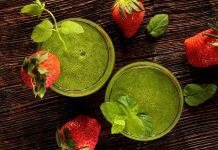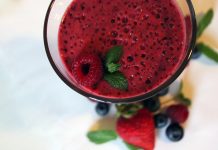
Possibly. Consider these facts about your body’s need for fat.
It is recommended that people consume 30% of total daily calories from fat, 55% from carbohydrates and 15% from protein. So, you are not consuming nearly enough fat in your diet according to these guidelines.
Fats perform many vital roles to aid in the body’s functions. Triglycerides, the main form of fat in the body and in foods, constitute most of the stored energy in the body. Triglycerides yield over twice as much energy per gram as carbohydrates and protein (fats provide 9 calories per gram, while carbohydrates and protein provide 4 calories per gram). The free fatty acids, released from triglycerides are the major source of fuel for the body at rest and during light activity.
Triglycerides and other lipids (fat) in foods also carry fat-soluble vitamin A, D, E and K to the small intestine. In doing so, lipids aid in the absorption of these nutrients. Without fat, you are at risk for developing deficiencies of these vitamins.
Food fat causes the stomach to empty more slowly than either carbohydrates or protein and it imparts satiety – the satisfied feeling you have after eating. If you reduce your fat intake below 20% of total energy intake, you will get hungry quicker.
The essential fatty acids, omega-3 and omega-6 are substances that need to come from the diet. They are necessary building materials for molecules and compounds that perform such vital functions in your body as regulation of blood pressure, blood clotting, immune response, and childbirth. Excellent sources of these essential fatty acids are salad dressings containing Canola or soybean oil, salmon, tuna, and sardines.
Another thing to be aware of is when fat is removed from a product, something else must be added, usually carbohydrates in order to maintain a desirable taste and texture. For this reason, many fat-reduced and fat-free products are still very energy dense – containing a high amount of calories. Remember that calories count too, no matter if they come from fat, carbohydrates or protein so be sure to moderate your portions if you consume a lot of fat reduced products. Consider the increase in the number of low-fat foods while the American public’s average weight has gone up. Low fat and fat-free foods are not the magic solutions for weight loss.
Have you tried the Healthy Body Calculator? If you put your physical data and activities in, it will calculate a healthy amount of calories and fat based on your nutrition goals.



